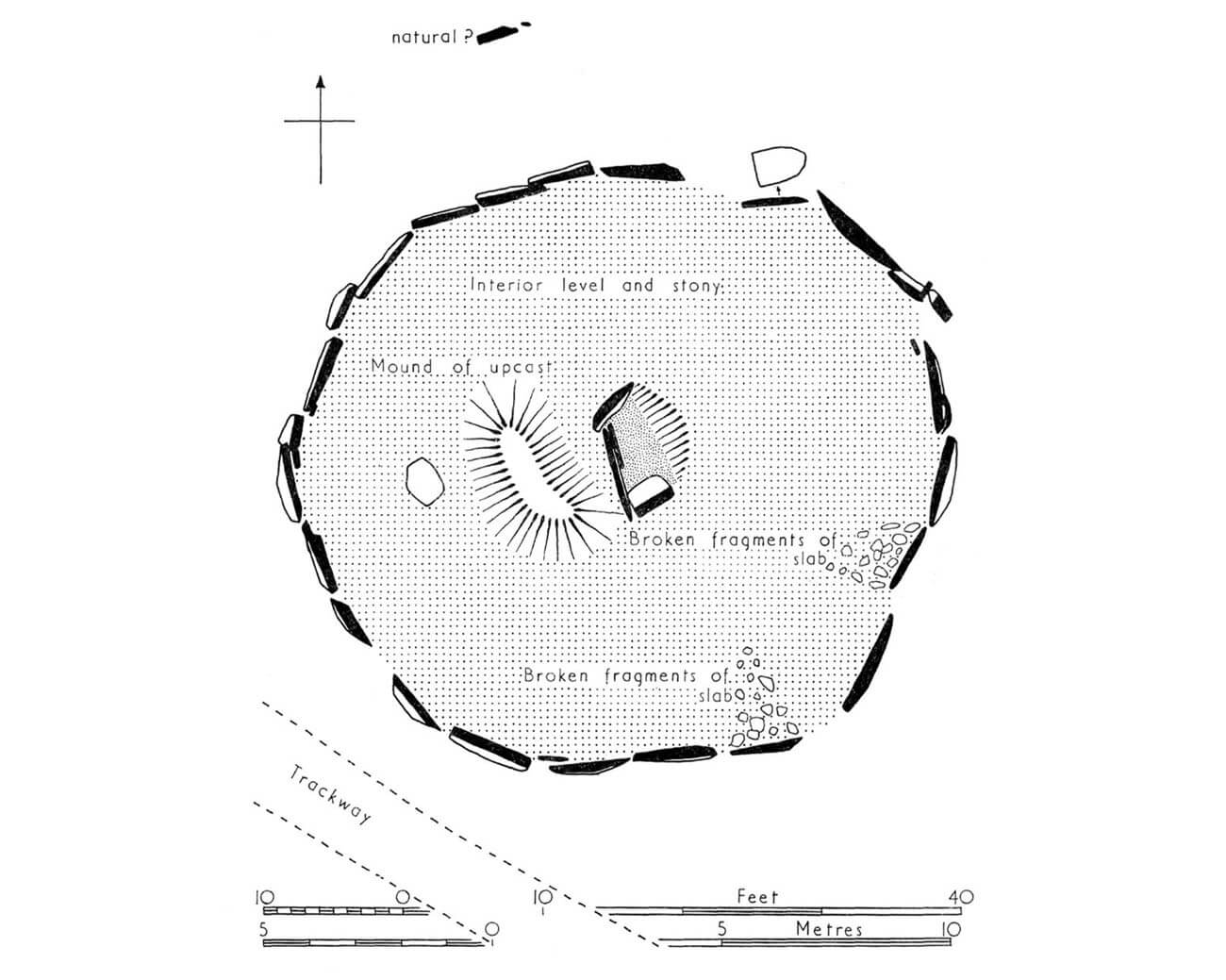History
Carn Llechart’s site is dated for the Neolithic period or the beginning of the Bronze Age. It was built by community who have already moved to a settled, agricultural lifestyle, which has developed a sense of territoriality, inheritance rights, and thus a desire to pay tribute to their ancestors. It was also associated with conducting religious ceremonies and rites, which the circle probably served. Carn Llechart was a unique structure because it combined the functions of a tomb with architecture typical of cromlechs, which may also have been related to the mixing or change of rituals. Perhaps builders in south Wales found older stone circles and incorporated them into their own funerary practices.
Architecture
Carn Llechart was situated on a hill with steep slopes on the north-east and east sides and slightly gentler slopes on the west. South of the cromlech, the ridge of the hill sloped gently for several hundred meters into another narrow valley, separating Carn Llechart from the next hill. Although the stone circle was not placed at the highest point of the area, it was clearly visible from the valleys in the east and west, as well as from the top of the hill in the north-west.
The cromlech was made of at least 25 stones, arranged on a plan similar to a circle with a diameter of 13.1 – 14 meters. The stones were arranged along the edges in such a way that their shortest sides were adjacent to each other, and the longer sides faced towards the center of the circle. They varied in length from 0.6 to 2.5 meters. The stones were probably originally dug into the ground vertically. None were more than 0.9 meters high.
Inside the circle was a small burial chamber, approximately 2.1 x 1.2 meters in size, made up of four stones forming the walls and a flat stone covering it, probably 5.3 x 2.4 meters in size and 0.8 meters thick. Presumably, there was originally a mound (cairn) above the burial chamber, made of small stones or earth. There was probably no clear entrance to the circle, which would make it an intermediate structure between a typical cromlech and a barrow with edges reinforced with large stones.
Current state
Carn Llechart is today one of the largest surviving cromlechs in Wales. 25 stones forming the circle have been preserved, although today most of them are more or less inclined. Inside the circle, you can still see a small burial chamber with three stones of the side walls, but the eastern stone and the capstone covering the pit are missing. The stone altar, or flat stone from the top of the central chamber, now lies about 90 meters from the cromlech. A small mound placed next to the burial chamber is the result of early modern excavations.
bibliography:
The Royal Commission on Ancient and Historical Monuments in Wales, An Inventory of the Ancient Monuments in Glamorgan, Volume I: Pre-Norman, Part I, The Stone and Bronze Ages, London 1976.


